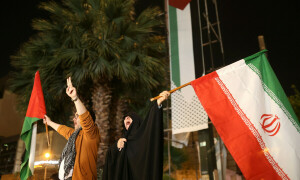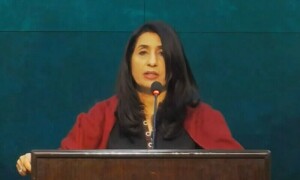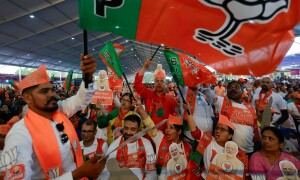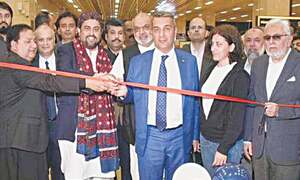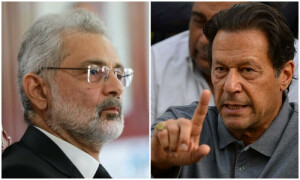WHILE many countries in the Eastern Mediterranean region have eradicated or almost eliminated measles, Pakistan remains among the small coterie of countries still struggling to do so. Even more unfortunate is that the country has experienced a nationwide resurgence of measles since last year.
The resulting deaths of children (131 in 2017, and 296 in the first eight months of 2018) made a strong case to galvanise the campaign to inoculate children with a supplementary dose of the measles vaccine. Started on Oct 15, the 12-day campaign has aimed to cover all children aged from nine months to under five years, irrespective of their previous vaccination status. It is an opportunity for many who have never been immunised.
But the challenge for the campaign ie to create the required immunity, is for its coverage to reach above 95 per cent. And the vaccine drive comes at a price. Almost $30 million (vaccines, supplies and operational costs) is being funded by the Global Alliance for Vaccines and Immunisation, with the government sharing 5pc of the vaccine cost under its co-financing agreement.
The campaign’s target is to reach more than 32m children across the country. Punjab, however, is vaccinating 2.75m additional children, targeting infants between six to nine months, as well as children between 59 to 83 months, through vaccines it has procured on its own.
Raising awareness must be a convincing exercise.
Much preparation has gone into making this campaign a success. Thousands of vaccinators have been trained and the cold chain strengthened. Executed through fixed sites, outreach and mobile teams, a huge army of human resources has been working in union councils across the country.
This includes more than 30,000 skilled vaccinators, medical technicians and lady health volunteers. An equal number of non-skilled persons have been assisting the campaign, marking the fingers of vaccinated children. The workforce also includes polio workers, with polio eradication resources having also been deployed in support of this drive.
However, unlike any polio eradication drive, which is door-to-door, the measles vaccine is delivered through an injection and can only be administered at a fixed facility. Therein lies the challenge: of bringing the mother out of the house to get her children vaccinated.
At a glance, Sindh has shown improvement in the past few years in both supply and demand. The latest Pakistan Demographic and Health Survey (2017-18) finds Sindh’s immunisation coverage has increased to 49pc from a dismal 29pc (PDHS 2012-13).
Nonetheless, these numbers, though encouraging, are still small. The process of improvement may have begun when it comes to immunisation in Sindh, but the journey is far from over. The survey highlights the fact that more than half of Sindh’s children remain unimmunised. These statistics are even more worrisome when the disparity between the rich and the poor in different urban areas is compared.
Pakistan’s largest city, Karachi, is also home to some of its largest slums, with an urban population that houses a large number of unimmunised children. The challenge of reaching every child and meeting the required coverage target is indeed a gargantuan task. With a target of more than 7m children, the government is working to remove bottlenecks in ensuring that every child — from hard-to-reach areas to urban slums, and even the city’s posh locales — is reached.
The campaign has also engaged more than 40,000 social mobilisers, polishing their interpersonal communication skills to convince parents about the importance and safety of the vaccine. Experts say ignorance and lack of awareness about the importance of routine immunisation, and an absence of sensitisation to dispel common misconceptions, are factors that hold Pakistani mothers back from getting their children inoculated. It is basically a trust deficit in the public health sector. Little do they know that the vaccines available at public health facilities and upscale hospitals are exactly the same, and are provided to both by the government.
Among the so-called elite class, where the mothers are primarily responsible for their children’s well-being while the fathers’ role is mainly that of providing financially, immunisation coverage can only improve if mothers are convinced of how imperative vaccination is.
Whether with polio or measles, the danger of relying on short-term campaigns to maintain high coverage, in the absence of a good routine immunisation system, cannot be overemphasised. The debate around something as vital to public health as immunisation needs to be incessant, convincing and realistic.
One positive aspect of immunisation is that its success is quantifiable, and the results are tangible. A collective effort is needed to make these numbers climb, for Pakistani children deserve it — after all, it’s their lives that are at stake.
The writer is a freelance journalist.
Published in Dawn, October 26th, 2018
Download the new Dawn mobile app here:




























